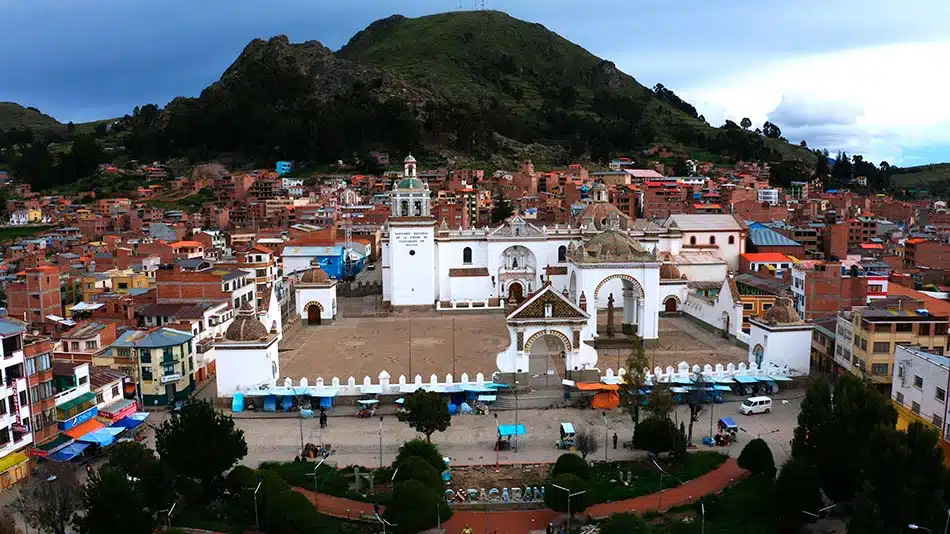The university is funding the restoration of the roof of the hostel adjacent to the basilica, which is a World Heritage Site. The initiative is a sign of the commitment to help preserve the cultural heritage of the Andean country.
The International University of La Rioja (UNIR), together with the Parentes Foundation, has promoted the rehabilitation of the pilgrims’ hostel of the Copacabana Cathedral, declared by UNESCO as a World Heritage Site, located on the shores of Lake Titicaca.
The project is part of the social responsibility programme that the educational institution is developing in Bolivia with the aim of conserving the country’s cultural heritage; thanks to which an essential part of the architectural ensemble of the sanctuary has been restored, where hundreds of pilgrims come to see La Candelaria, the most venerated Virgin in Bolivia.
To celebrate this initiative, a solemn mass was held in the cathedral to bless the work, where the Peasant Choir performed music in honour of the Virgin. It was attended by ecclesiastical, political and cultural authorities.
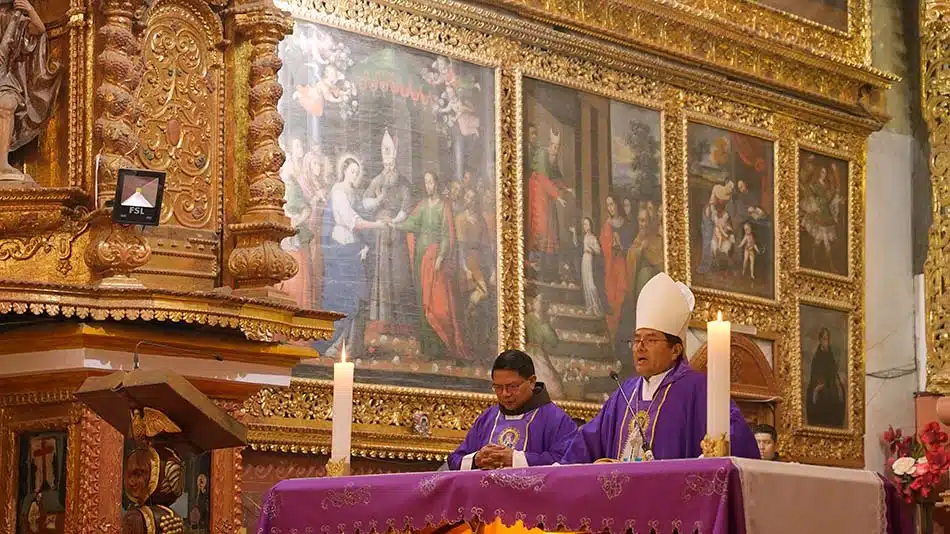
Monsignor Jorge Herbas officiates the blessing mass of the work in the cathedral, together with the parish priest Abelino Yeguaori.
Luis Iriarte, UNIR’s representative in Bolivia, led the ceremonial act of handing over the work to the Franciscan brother Abelino Yeguaori, parish priest of the basilica, and to Monsignor Jorge Herbas, bishop of the Prelature of Aiquile-Cochabamba, who expressed his gratitude for the support obtained to maintain this Cultural Heritage recognised by UNESCO. “Unfortunately, it does not always receive the necessary support from public institutions. That is why we thank UNIR and the Fundación Parentes, and we hope that this is the first of many collaborations”, he declared.
For his part, Iriarte highlighted the work carried out by the institution he represents: “This rehabilitation promoted by the International University of La Rioja allows us to continue preserving a building of great heritage and spiritual value for Bolivia that was at risk of collapse due to the state of the roof,” he said.
Rehabilitated to receive pilgrims
The refurbishment of the hostel will provide adequate accommodation and services for hundreds of pilgrims who come on pilgrimage throughout the year from all parts of Bolivia and other countries, especially Peru.
The work involved an investment of around 160,000 dollars and was supervised by the architect César Zambrana, who emphasises the cathedral’s importance as an economic engine for the area: “Every year thousands of visitors come on pilgrimage, because the love we Bolivians feel for Our Lady of Copacabana is immense. By improving the conditions offered by the basilica for pilgrims, we not only help the exercise of faith, but we also promote the development of this town,” he remarked.
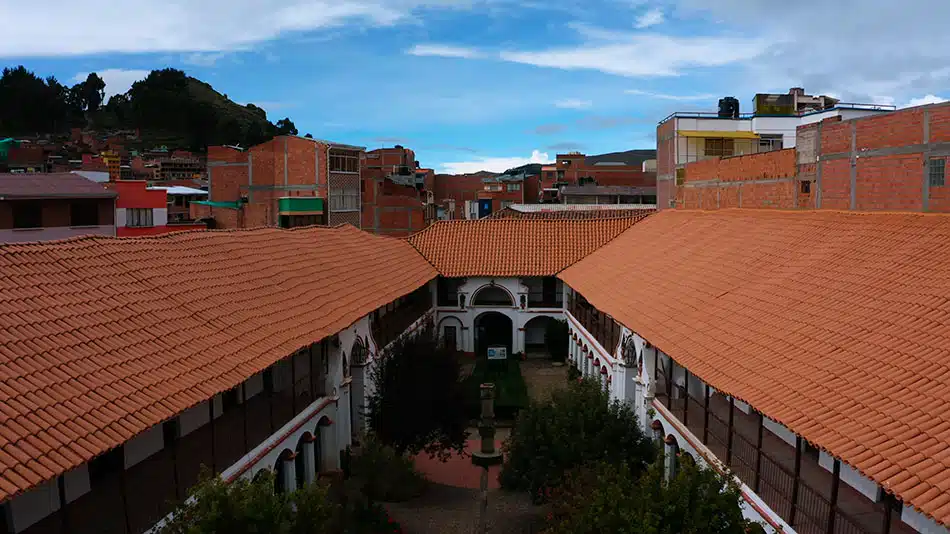
In addition to the roof (image), the hostel’s rooms and bathrooms were restored.
The project was carried out in four phases, the most important of which was the complete replacement of the roof of the hostel, consisting of four gabled roofs, under which galleries are sheltered on the ground and upper floors, creating a rectangular courtyard. A new electrical system was also installed to replace exposed cables that posed a risk to visitors. Finally, renovations were carried out in the toilets, which were in an advanced state of disrepair, and in rooms with leaks, providing them with new ceilings, walls and furniture.
For the planned development of the work it was necessary to procure quality materials, colonial tiles, clay and straw, as well as to mobilise specialised roofing personnel from the city of Cochabamba.
A restoration with great challenges
The biggest challenge was the restoration of the roof, since as it is a historical heritage site, it was not possible to remove the entire roof in order to correct the existing deformation on the surface. The intervention had to be as faithful as possible to the original finish, so it was decided to use the traditional construction technique of the time in a delicate, high-precision process so as not to damage other elements.
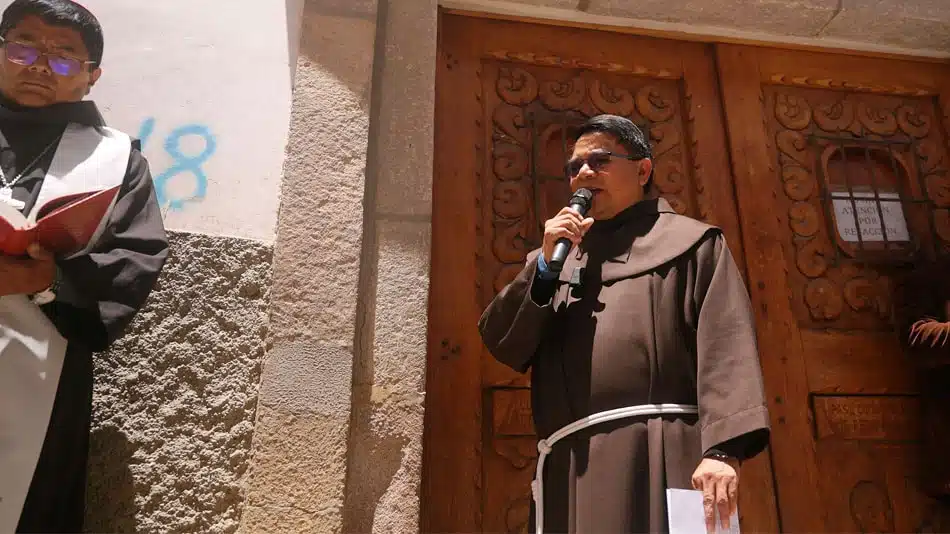
Abelino Yeguaori, parish priest and Franciscan friar, says a few words at the blessing of the guesthouse.
“The condition of the roof made it very difficult to stay there because of the leaks and dampness. …. Now, in addition to the pilgrims, students or people who wish to do spiritual exercises can come here for training“, commented the parish priest Abelino Yeguaori happily.
The work delivered presents a guest house that recovers all its functionality so that visitors can stay comfortably and enjoy the spirituality and art that the sanctuary as a whole, where the cathedral stands out.
This unique construction from 1550, originally Renaissance and then Moorish style after being restored in the 17th century, treasures altars and altarpieces from the colonial baroque of great artistic value, as well as the Capilla Abierta or Capilla de Indios, attached to the nave of the temple and so called because the indigenous faithful had the custom of celebrating their religious ceremonies in the open air.
Educational and corporate social responsibility activities
UNIR’s commitment in Bolivia is manifested through its 100% online academic activity, with more than 66,000 students in more than 90 countries; and in the promotion of social and cultural development projects in the country.

Group of indigenous people in the courtyard of the hostelry.
As an institution of Higher Education, one of UNIR’s aims is to contribute to the progress of society through the creation and transmission of knowledge and the promotion of culture, training people with a comprehensive education and providing the territorial environment with resources and tools that favour social transformation and development.
In Bolivia it already has more than 150 students who can access more than 200 official qualifications recognised by national universities, under a pedagogical model of European quality, innovative and practical, which seeks continuous improvement focused on employability and excellence.
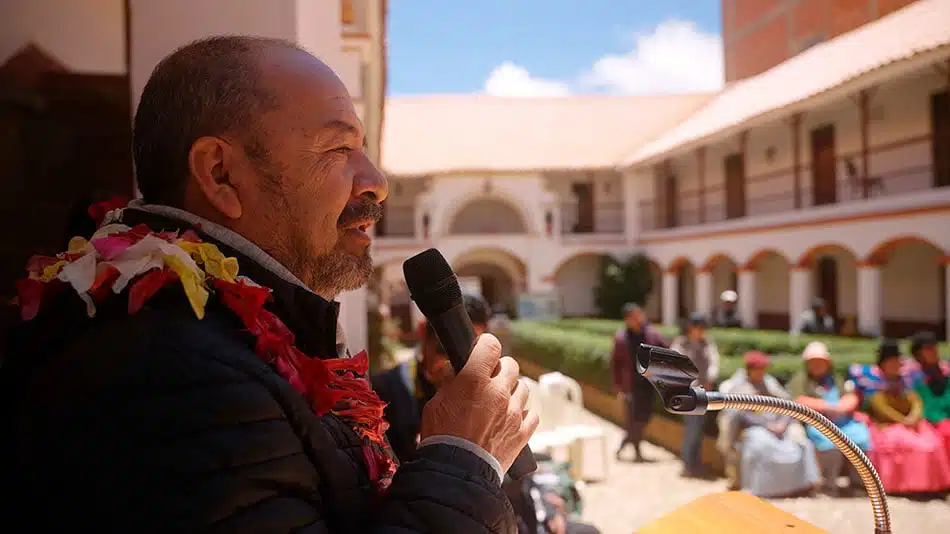
Luis Iriarte, UNIR’s representative in Bolivia, speaking at the reopening of the hostel.
Similarly, UNIR’s commitment extends to promoting social and cultural development projects in the country. Some examples are the restoration of four canvases by the 16th century painter Bernardo Bitti, in collaboration with the archbishopric of Chuquisaca; and the celebration of the ‘Tenebrarium’ concert in Sucre and Potosí in 2023, after recovering valuable baroque scores that have never been performed before.
More recently, UNIR has promoted the installation of a new electrical and public address system in the Basilica of Concepción, completed in January this year, again in conjunction with the Fundación Parentes of the Proeduca educational group, to which the university also belongs. As with the Copacabana Cathedral, the two institutions held a joint handover ceremony on 25 February.
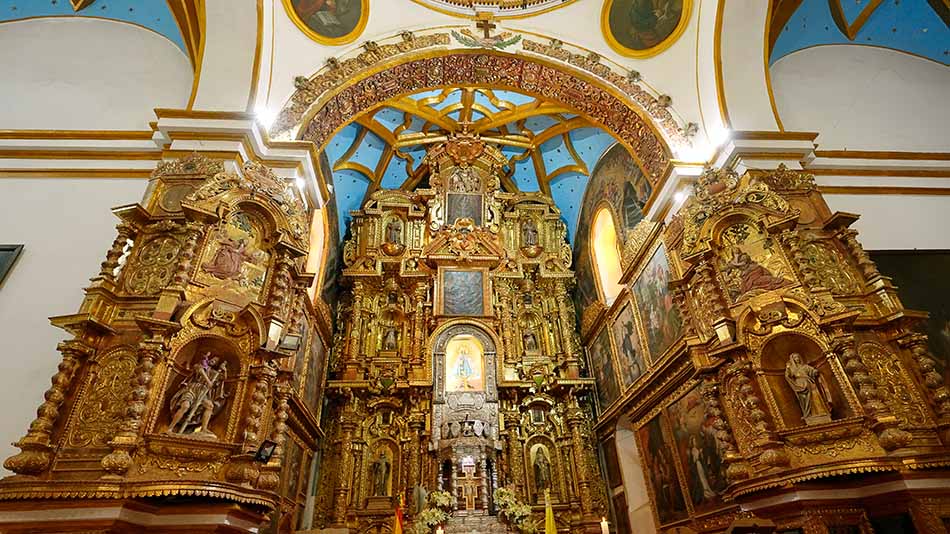
The high altar is one of the jewels of the Copacabana Basilica.
